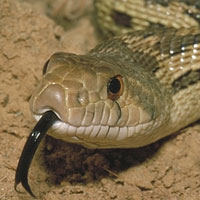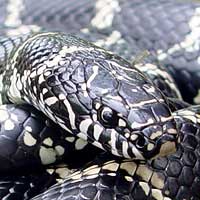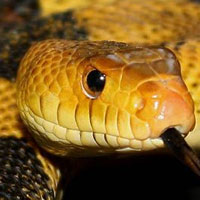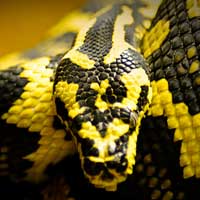All About the Fer-de-lance: A Detailed Guide
The Fer-de-lance (Bothrops asper) belongs to the Viperidae snake family, which is characterized by its venomous species with long, hinged fangs and heat-sensing pits, making it a highly effective and dangerous predator native to Central and South America.
Scientific Name: Bothrops asper
Snake Family: Viperidae
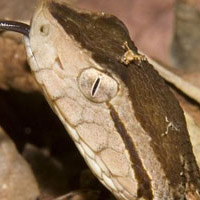
An Overview of the Fer-de-lance
The Fer-de-lance (Bothrops asper) is a highly venomous pit viper native to Central and South America. Known for its potent venom and striking patterns, this snake is one of the most feared yet ecologically important predators in its range. Despite its dangerous reputation, the Fer-de-lance plays a crucial role in controlling rodent populations, which helps maintain ecological balance.
Where Does the Fer-de-lance Live?
The Fer-de-lance is a versatile species that thrives in a variety of environments across its range. Key habitat characteristics include:
- Geographic Range: Found in countries such as Mexico, Costa Rica, Colombia, and Ecuador.
- Preferred Environments: Tropical rainforests, lowland forests, agricultural fields, and even near human settlements.
- Climate: Prefers warm and humid climates typical of tropical and subtropical regions.
The snake’s ability to adapt to different environments allows it to flourish in both pristine and disturbed habitats. Below is a summary of its habitat preferences:
| Habitat Feature | Description |
|---|---|
| Geographic Range | Central and South America |
| Preferred Terrain | Tropical forests, agricultural areas |
| Climate | Warm and humid |
What Does the Fer-de-lance Eat?
The Fer-de-lance is a carnivorous predator with a diet that reflects its role as an apex predator in its ecosystem. Key dietary details include:
- Primary Prey: Small mammals such as rats, mice, and opossums.
- Occasional Prey: Birds, amphibians, and other reptiles.
- Hunting Strategy: An ambush predator, it uses its heat-sensing pits to detect warm-blooded prey before delivering a venomous strike.
This snake’s ability to consume a wide variety of prey helps maintain ecological balance, particularly in agricultural areas where rodents can cause significant damage.
Understanding the Behavior of the Fer-de-lance
The Fer-de-lance is known for its defensive nature and nocturnal habits. Key behavioral traits include:
- Activity Pattern: Primarily nocturnal, most active during the night when hunting.
- Defensive Displays: Relies on camouflage to avoid detection but will coil and strike if threatened.
- Social Behavior: Solitary, except during mating season.
While its defensive behavior may seem aggressive, the Fer-de-lance typically avoids confrontation unless provoked. Understanding its habits is essential for safely coexisting with this species.
Health and Lifespan of the Fer-de-lance
The Fer-de-lance has a relatively long lifespan and is a robust species. Important health considerations include:
- Lifespan: 10-15 years in the wild, with individuals in captivity sometimes living up to 20 years.
- Health Challenges: Habitat destruction and parasitic infections are common threats.
- Predators: Birds of prey, larger reptiles, and mammals pose significant risks, especially to juveniles.
Proper habitat preservation and care in captivity are crucial for maintaining the health and longevity of this species.
How Does the Fer-de-lance Reproduce?
The Fer-de-lance follows a reproductive cycle that ensures its survival in challenging environments. Key details include:
- Mating Season: Late spring to early summer.
- Reproductive Method: Viviparous, giving birth to live young.
- Litter Size: Typically 20-50 offspring per litter, depending on the female’s size and age.
- Hatchling Behavior: Newborns are independent and fully venomous from birth.
This high reproductive rate helps sustain the population despite high juvenile mortality rates due to predation.
Safety Guidelines for Handling the Fer-de-lance
Handling the Fer-de-lance is a task that requires expertise and proper equipment. Key safety measures include:
- Always use professional tools such as snake hooks and secure transport containers.
- Wear protective gloves and boots to minimize the risk of bites.
- Ensure enclosures are escape-proof and mimic the snake’s natural environment.
- Keep antivenom readily available and have an emergency plan in place.
Only trained professionals should handle this species to ensure the safety of both the handler and the snake.
Disclaimer
The information provided in this article is for educational purposes only. SnakeEstate strongly advises against handling or interacting with venomous snakes, such as the Fer-de-lance, unless you are a trained and licensed professional. These snakes pose significant risks, and improper handling can result in serious injury or death. Always adhere to local regulations and prioritize safety when dealing with wildlife.
Other Snakes In This Species
 Asp Viper
Asp Viper Black Mamba
Black Mamba Boomslang
Boomslang Brazilian Coral Snake
Brazilian Coral Snake Bushmaster
Bushmaster Coastal Taipan
Coastal Taipan Common Death Adder
Common Death Adder Common European Adder
Common European Adder Copperhead
Copperhead Coral Snake
Coral Snake Cottonmouth
Cottonmouth Eastern Brown Snake
Eastern Brown Snake Eastern Diamondback Rattlesnake
Eastern Diamondback Rattlesnake Egyptian Cobra
Egyptian Cobra Fer-de-lance
Fer-de-lance Forest Cobra
Forest Cobra Indian Cobra
Indian Cobra Inland Taipan
Inland Taipan Jameson’s Mamba
Jameson’s Mamba King Cobra
King Cobra Lancehead
Lancehead Lataste’s Viper
Lataste’s Viper Malayan Krait
Malayan Krait Mojave Rattlesnake
Mojave Rattlesnake New Guinea Small-eyed Snake
New Guinea Small-eyed Snake Nose-horned Viper
Nose-horned Viper Puff Adder
Puff Adder Russell’s Viper
Russell’s Viper Saw-scaled Viper
Saw-scaled Viper Solomon Island Coral Snake
Solomon Island Coral Snake South American Rattlesnake
South American Rattlesnake Tiger Snake
Tiger Snake Western Diamondback Rattlesnake
Western Diamondback Rattlesnake



